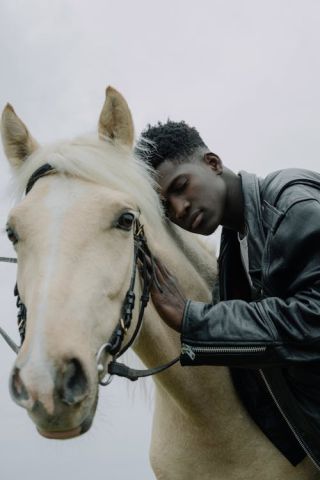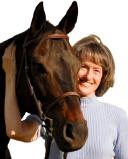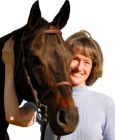Ethics and Morality
Abuse and the Control of Executive Function
Human training for animal welfare.
Updated July 25, 2024 Reviewed by Monica Vilhauer
Key points
- Many non-abusive techniques exist in training animals, teaching children, and maintaining relationships.
- Executive function subserves judgment, but also underlies option selection and risk assessment.
- Contradictory messages make coercive techniques even more abusive.
- Animal welfare is a primary human responsibility that must remain our ultimate aim

British equestrian Charlotte Dujardin withdrew from the Paris Olympics yesterday when a video showed her abusing a horse. The discovery marks a moment of deep sadness for horse lovers everywhere. Fortunately, the international and national associations governing equine events acted immediately to pull the three-time gold medal dressage rider from competition. But the video deserves careful analysis. It shows a human prefrontal cortex overtaking a horse trainer’s better judgment—odd on the surface, since it is the prefrontal cortex that subserves human judgment.
Dujardin is revered in the dressage world for her London Olympics performance on Valegro in 2012 and remains one of the top riders in the sport. Her method of “training” the unnamed horse in the video is all the more disappointing for that reason. The video shows her giving a lesson to a student who is riding a dressage horse at a very slow collected canter. The horse is performing well by most intermediate standards, but Dujardin complains that he is not lifting his legs enough. Leg action is a desired trait in high-level dressage competition. To increase it, Dujardin follows horse and rider from the ground with a 12-foot longe whip, lashing the horse's hind legs 24 times in one minute. The horse is clearly frightened and attempts to evade the whip but is held in position by the rider.
There are many ways to address a training “problem” of this sort. One is to insist that dressage judges stop rewarding riders whose horses show extreme leg animation and boycott competitions until they do. A second option is to select the correct horse for the job. Some breeds and individuals tend toward higher leg action than others. A third is to place the horse in training with a more advanced rider who could encourage animation from the saddle, without the use of whips, spurs, or harsh bits. Fourth, veterinarians should check a horse's soundness to be sure he is physically capable of lifting his legs in the desired manner and without pain. Fifth, humans have choices when horses do not—we can refuse to participate in lessons that demand high leg animation in a horse who isn’t bred for it. Sixth, it helps to separate problem identification from problem solution. In other words, instead of reacting to behavior in the moment, observe and remember it. Then sit down later that day and think rationally about how to address it. Come back tomorrow and attempt a solution.
These six options come to mind immediately. The selection might be enlarged with more careful consideration and a deeper knowledge of the horse and rider in question. But the highest priority is to demand of ourselves—as trainers and riders, parents, coaches, athletes, adults—that our methods of education always uphold welfare as the ultimate aim.
The video is disturbing for several reasons beyond the fact that a horse is being whipped because a trainer selected the wrong training option. It shows a trainer teaching a student by her own example how to abuse a horse. That’s wrong. The relationship between trainers and students is very close, similar to that of a parent and child, which lends special credence to the trainer’s lessons. Instead of learning kind and effective training techniques, this student is learning to educate an animal by punishment. Not only is punishment of this sort unethical, it's also the least effective means of achieving a goal.
The video also demonstrates the sin of placing a horse in an impossible position, something good trainers try never to do. This horse is being whipped on the hindquarters, driven hard to move forward, but he is simultaneously held back by the rider’s hands on a strong bit. While the furor has focused on Dujardin as the trainer, we might also evaluate the rider who is participating in the horse's mistreatment. To demand stronger forward movement while preventing it is a Catch-22 that a horse’s brain cannot understand and that a human brain should not create.
Chuckling is heard in the background of the video, evidently emanating from observers just outside the arena. It’s more prominent when the horse kicks out in objection to the whip, as if his effort to evade needless punishment is amusing. Many observers wouldn’t be aware of the horse’s mental position in this situation. I certainly hope they wouldn’t have chuckled if they understood it. And it’s important to remember that at least one audience member wasn’t chuckling, or at least not for long—the anonymous viewer who recorded the video and submitted it to authorities.
Why do these things happen? Because sometimes the human prefrontal cortex fails. It takes over in an effort to achieve training goals at any cost, then gets tired and can't generate all the options. Dujardin admits she is “deeply ashamed” of her behavior and characterizes it as an “error of judgment.” Judgment is one of the primary capacities of executive function, along with goal setting, option selection, decision making, the regulation of emotion, and risk assessment. Clearly, Dujardin's ability to assess risk was reduced at the time. She also selected the wrong option and carried it out. Perhaps all of us have selected the wrong option at some point in our lives when cameras weren’t pointed at us. That doesn’t excuse our behavior, but it does give us the opportunity to correct it privately.
The same thing can happen when parents spank a child or husbands strike their wives. The prefrontal cortex wants to achieve a goal but selects the wrong option. This can occur when people are not aware of other options, as is common among those who have been abused themselves and have experienced little kindness in their own lives. Other times it occurs because we are in a hurry and do not give our brains time to retrieve and consider other options. We might be working in a distressed or tired mindset. We all get hangry at times. That's why we need to develop good training options in advance and train our brains to select them.
On a personal note, I dislike having to add greater publicity to Dujardin's behavior by writing this article. Many horse trainers and equestrian authors remain silent in the public eye, to save themselves criticism from within. But we cannot turn away from issues of equine welfare and social license. Most of us ride horses because we love them, and we take pride in offering them the best possible care. Horse and human brains operate in radically different ways. When we understand how those brains interact—for better and worse—we can make more responsible decisions for equine welfare.
I’d like to issue a challenge to all of us, including myself. Let’s vow to train our animals, teach our children, and manage our relationships without harsh methods. It might be hard to do and it takes more time, but we need to prove to ourselves and each other that we can succeed without demeaning others. It is possible to train a horse without the extreme use of whips, spurs, or strong bits, just as it is possible to teach a child without the use of corporal punishment or emotional coercion. Learn gentler techniques; they’re available. The bond between horse and rider, child and parent, or loving couples is far more important than how high they lift their legs.
References
Mather, V., & Marshall, A. (July 24, 2024). "Caught Repeatedly Whipping a Horse, Top British Rider is Out of the Olympics," The New York Times. https://www.nytimes.com/2024/07/23/sports/charlotte-dujardin-equestrian…




